Top 5 garden design mistakes (and how to avoid them)
Top 5 Garden Design mistakes and how to avoid them
Garden Design Mistake #1 – having no overall plan
As soon as the sun starts shining and the things start to warm up, attention naturally turns to our outdoor spaces and it is tempting to dust off your tools and get stuck into that part of the garden that has been bugging you the most. The danger is, without any overall plan, that change may not make sense when you come to the next area that is grabbing your attention. It is not to say that gardens shouldn’t evolve, but starting without an overall plan about how the space is going to fit together is like building a house one room at a time. Try to treat it more like a jigsaw puzzle – starting with the overall picture you are trying to create, than a freestyle piece of art where you start making marks and see where it leads you. This is because design is more than pure creativity; it is a combination of art and practicality. Functional requirements (eg are you going to walk across a soggy lawn in winter to get to where you keep the bikes?) need to be considered alongside the practicalities of how something is going to be built, as well as the creative aspects of the design. So, start with a piece of paper, list everything you want/need in the garden and think about your priorities. Spend time looking at images, or ideally visiting gardens, and reflect on what you would love to create in your garden – what would make your heart sing? What would make you garden feel like a haven where you want to spend more of your time? How could you create a wow factor or a thing of natural beauty?
Before we start any design, we spend time gathering a detailed brief that covers everything that we need to know to create a design that works successfully within its environment and is unique to its owners own personality and preferences. This summarises what we take into account:
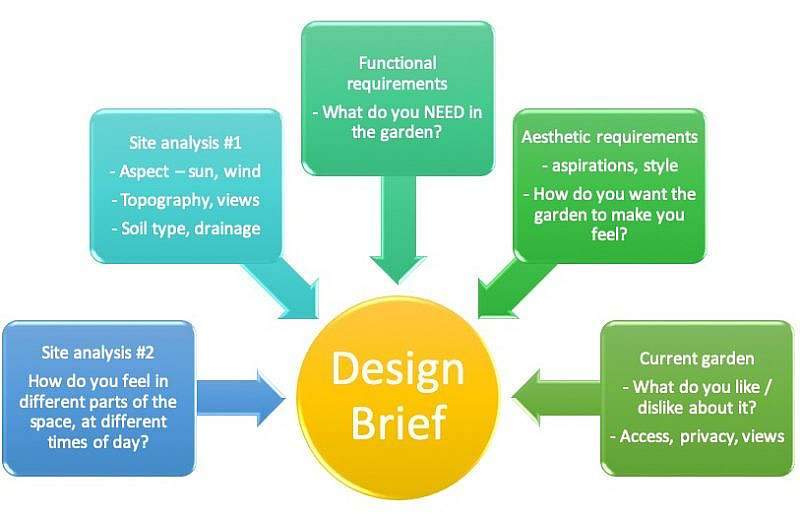
The other reason to think of the garden as a whole is that there are many design principles that need to come together to make a design ‘work’. A change in one element of a garden, sometimes even quite small – such as changing the size of a terrace or moving a tree – can have knock on effects on other aspects of the design. The skill of a garden designer, who can take account of all these factors together, is really what you are paying for when engaging a designer. It is beyond the scope of this article to explain all these factors, but this gives a flavour of all the factors we weigh up when creating a design.
Design principles
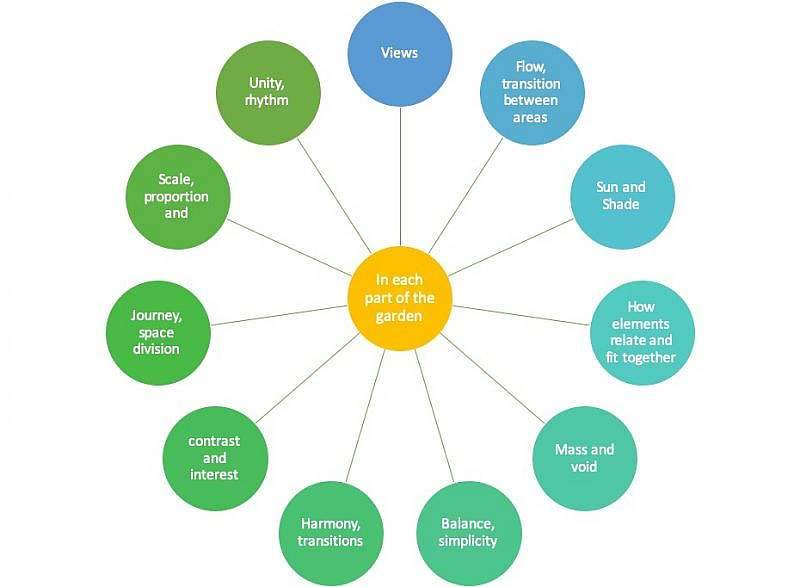
Garden Design Mistake #2 – Starting with the plants
Most people who love gardens love plants, so when planning their garden their natural instinct may be to start with a trip to the garden centre. I know that in a plant nursery I can be like a kid in a sweet shop, but I have learnt as a designer not to over indulge my love of new and different plants. It is tempting to pick one or two of everything, but this can mean you come home with an assortment that can make the garden look like an incoherent stamp collection. It is much better to choose 2 or 3 species and buy several of each – these can be planted in blocks or drifts that will create more impact than a patchwork quilt of single plants and will bring a greater feeling of harmony to the space.
For most designers however, the plants will come last in the garden design process – after the layout and structure of the garden has been decided. The only plant that I might start with are trees – partly because a garden might have existing trees that are either protected and need to be designed around, but also because they add structure to the space (see mistake #4).
Garden Design Mistake #3 Lack of unity
When we walk into a space – whether indoors or outdoors that feels harmonious and somehow ‘hangs together’ – we feel it. One of the biggest mistakes we see, is using too many different materials, shapes and sizes and competing ideas that make the space feel ‘fussy’ or disjointed.
For example, rather than buying lots of pots of different sizes, shapes and colours; choose a fewer number that may use the same material, shape or feature. This will add more impact and feel more harmonious.
Using the same material in different ways within the garden is one way to bring a sense of unity to the space. For example, here we have used Corten Steel in different ways. In this garden, the most obvious is a decorative panel, but this is picked up in the edging used on some of the paths and the wall lights. The decorative steel panel is mounted on decking boards that were used to construct one of the terraces further linking these areas.
Harmony was also created by using dark clay pavers for the main terrace and paths that we ‘tumbled’ revealing a reddish colour that linked with the steel.
This colour was also picked up in the roof tiles. In addition to the house itself, these roof tiles were used on the window sills of the house, as step risers and as coping to one of the boundary walls.
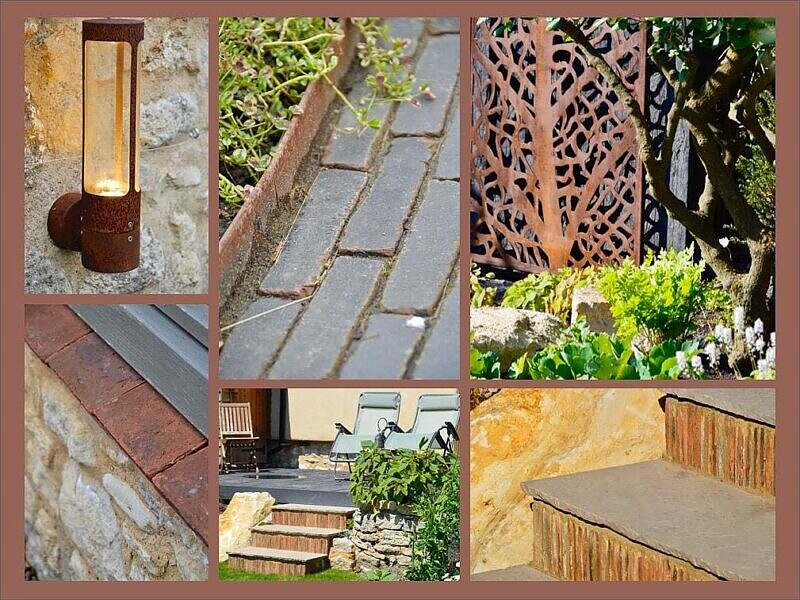
Unity is also brought into the design through the use of plants. In this garden we used 3 Prunus Serrula trees; each planted within a different bed. The golden mahogany coloured bark of the trees also toned in with the rust colour in the steel and roof tiles

When creating unity in the design one has to be careful not to go too far. If everything had a similar colour, texture or form, the garden could become boring and lifeless. Contrast is also important to stimulate our senses, and the skill is creating a harmony within the materials and planting palette as well as the geometry/shapes used to deliver something new that did not exist before.
In this garden we linked the Cotswold coloured stone on the building with the boundary walls, boulders that were added and the stone chippings used on some of the paths. This stone was deliberately contrasted with the graphite grey pavers and composite decking.
Garden Design Mistake #4 too much empty space
When I was training as a designer one of my lecturers asked the question “what is garden design all about?”, he then put up a rather cryptic slide (showing an astronaut!) with the headline “it’s all about space”. Over the years I have really come to understand what he meant. There are 2 aspects of space – those that appear in 2D and those that appear in 3D. The ‘flat’ 2D elements happen on the horizontal plane and include elements such as paths, patios and lawns. The 3D elements bring in the vertical dimension and include elements such as pergolas, walls, trees and buildings.
It is these vertical elements – such as trees or pergolas that create ‘mass’ in the garden. A garden tends to ‘feel right’ when there is a good balance between ‘mass’ (trees, buildings etc) and ‘void’ – the empty spaces (such as lawn) in between.
Elements that add mass or volume to the space also tend to form the ‘backbone’ of the garden during the winter. If a garden focusses too much on flowery perennials, without a structure of built elements and evergreen plants, it is going to look very bare and uninteresting during the winter months, so think about including this in a design as one of the first elements.
I mentioned above that I include trees early on in the design process. I don’t even need to know the species at this stage, but they add height, structure and contribute to avoiding the next mistake people often make.
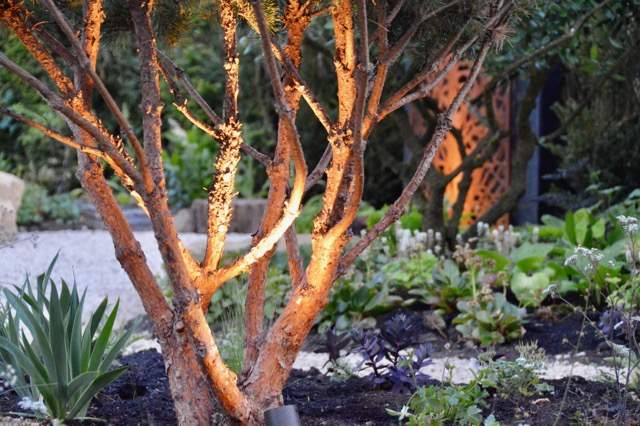
Garden Design Mistake #5 No sense of journey or drama
This is related to the last mistake; A garden isn’t just an ‘outdoor room’ it is often a series of rooms or spaces that create a narrative or unfolding sequence of experiences.
The mistake that many people make is to have one large space occupied by the lawn – usually in the middle, simply offset from the boundary, surrounded by flower beds and perhaps trees and shrubs around the edge. This can work for some gardens, but generally means that a) the whole garden is revealed all at once b) there is very little division of the space and a sense of journey through it.
By dividing up the space, you can immediately create a feeling of discovery and surprise as you transition from one area to another. Transitions could be marked by gaps between taller elements such as hedges, walls, trees or shrubs or built elements such as arches. Attention can be drawn through the space in many ways – how materials are used, repetition and rhythm in the planting, playing with perspective or adding focal points.
In this garden we planted mulit-stem trees at the front. This created a feeling on intimacy within the garden but also created a sense of intrigue as you could see through the stems of the trees to the dramatic sculpture and reflecting pool. We designed 2 paths that lead to steps into a sunken seating. This change of level and circular route both added to the sense of journey, even in a small space.
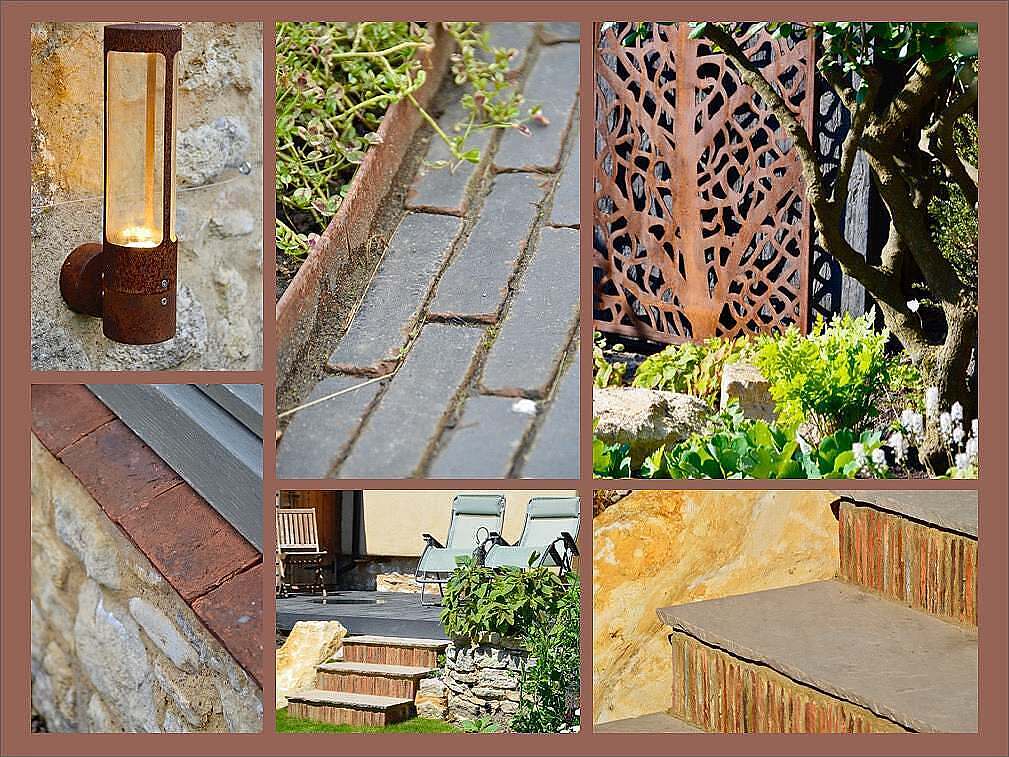
0 Comments